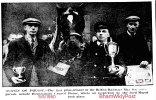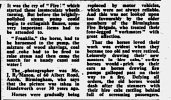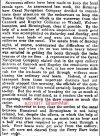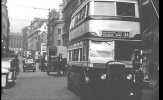-
Welcome to this forum . We are a worldwide group with a common interest in Birmingham and its history. While here, please follow a few simple rules. We ask that you respect other members, thank those who have helped you and please keep your contributions on-topic with the thread.
We do hope you enjoy your visit. BHF Admin Team -
HI folks the server that hosts the site completely died including the Hdd's and backups.
Luckily i create an offsite backup once a week! this has now been restored so we have lost a few days posts.
im still fixing things at the moment so bear with me and im still working on all images 90% are fine the others im working on now
we are now using a backup solution
You are using an out of date browser. It may not display this or other websites correctly.
You should upgrade or use an alternative browser.
You should upgrade or use an alternative browser.
Birmingham's Working Horses
- Thread starter davidfowler
- Start date
HorseCoper
proper brummie kid
@mikejee - I was saddened by what I read in a caption underneath a photo published by David Flett on Flickr (link below) regarding Young's Brewery. I quote:
"Once a respected Wandsworth, London, institution, it closed not long after I took these pictures in June 2006. The company continued to own their pubs - but these quickly became upmarket food orientated 'leisure destinations' rather than beer-orientated boozers. Beers called 'Youngs' continued to exist, but brewed in Bedford by Charles Wells. They in turn got bought out by Marstons. So 'Youngs' is now just a 'brand'. They couldn't just knock down the historic buildings, so these got incorporated into a new 'urban quarter' or some such estate agent BS, meaning that there are now lots of flats in the yard. So all told the tale is a neat summary of 21st century Britain!"
I'm afraid Mr Flett is so right.
With best regards,
Jack
"Once a respected Wandsworth, London, institution, it closed not long after I took these pictures in June 2006. The company continued to own their pubs - but these quickly became upmarket food orientated 'leisure destinations' rather than beer-orientated boozers. Beers called 'Youngs' continued to exist, but brewed in Bedford by Charles Wells. They in turn got bought out by Marstons. So 'Youngs' is now just a 'brand'. They couldn't just knock down the historic buildings, so these got incorporated into a new 'urban quarter' or some such estate agent BS, meaning that there are now lots of flats in the yard. So all told the tale is a neat summary of 21st century Britain!"
I'm afraid Mr Flett is so right.
With best regards,
Jack
Janet Hunt
master brummie
Lest we forget the war horse... Taken from https://www.iwm.org.uk/history/15-animals-that-went-to-war. British troops scraping mud from a mule near Bernafay Wood on the Western Front, 1916. British military authorities tried to ensure that animal handlers cared for their animals properly.
Attachments
brenda barr
master brummie
My grandfathers horse was recruited in1914( he had a feed store on Park Road), and was one of the lucky horses to make it back my g/f was so happy to have him back and realized his horse must have been been through hell, so the horse was turned to pasture never to work again.
The animals that served on the Western Front might have been treated well but those that went to East Africa often had a very short life, being exposed to a hostile climate, vegetation, insects and native carnivores. The same was true to some extent for the men. The chances of being killed were low compared to the Western Front but falling ill was a near certainty.Lest we forget the war horse... Taken from https://www.iwm.org.uk/history/15-animals-that-went-to-war. British troops scraping mud from a mule near Bernafay Wood on the Western Front, 1916. British military authorities tried to ensure that animal handlers cared for their animals properly.
The “silent participants”.Lest we forget the war horse... Taken from https://www.iwm.org.uk/history/15-animals-that-went-to-war. British troops scraping mud from a mule near Bernafay Wood on the Western Front, 1916. British military authorities tried to ensure that animal handlers cared for their animals properly.
Viv.


Source: British Newspaper Archive
Janet Hunt
master brummie
After the 1st World War, Winston Churchill an avid animal lover arranged the the safe return of many horses stranded in Europe back to the UK. Close to 62,000 horses were returned home.
That’s good to hear Janet. And hopefully they enjoyed a peaceful retirement too. I doubt they’d have proved to be good working horses if they served on the front. Viv.
Janet Hunt
master brummie
Many owners put these horses out to pasture and never worked them again after their stressful ordeals during the war. This is good to know....but many never returned which is rather sad.That’s good to hear Janet. And hopefully they enjoyed a peaceful retirement too. I doubt they’d have proved to be good working horses if they served on the front. Viv.
brenda barr
master brummie
my grandfather Wm Joseph Barr, had his horse returned to him after ww1 and turned his horse to paster in Fillongley, saying she was never going to work again.After the 1st World War, Winston Churchill an avid animal lover arranged the the safe return of many horses stranded in Europe back to the UK. Close to 62,000 horses were returned home.
paul stacey
master brummie
My wife's grandfather, was a ploughman, in the fens, and had a stable of 6 horses, mainly shires, he told her that as a lad he would walk 8 miles a day ploughing, and that his horses were his children, he lavished, all the love and affection on them, when some were seconded for War service in 1915, he was heart broken, and non were returned. my wife recon he never forgot them and was still grieving into old age!!! Funny, how we lavish so much affection on animals, not so much on humans.!!
Pedrocut
Master Barmmie
Icebreaking, although no longer practised today, was a normal feature of maintenance work. A very poor quality photograph, this dates back to the first world war and depicts icebreaking somewhere (possibly the Tame Valley Canal) on the Birmingham Canal Navigations. The horses provide the tractive effort, while the men roll the boat from side to side.
A Pictorial History of Canals by Gladwin, David Daniel Francis (1977)
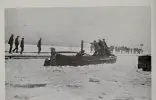
A Pictorial History of Canals by Gladwin, David Daniel Francis (1977)

Pedrocut
Master Barmmie
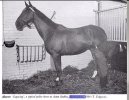
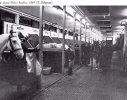
“Aston Stables were opened at the beginning of 1984 and form part of a £3.5 million complex for the Transportation Department of the West Midland Police Force. This replaced antiquated buildings in Duke Street, about a mile distant.
Aston Stables were opened at the beginning of 1984 and form part of a £3.5 million complex for the Transportation Department of the West Midland Police Force. This replaced antiquated buildings in Duke Street, about a mile distant.
Compared with life in their former quarters horses were described as now 'living in the lap of equine luxury'. The modern structure is grouped on three sides of an inner reservation, surrounded by a continuous exercise track. At the northern end were offices while on the right were tack or harness rooms, a trophy room and further administrative quarters. The southern end of the building was occupied by the stable block proper, with spacious stalls and a few loose boxes on either side of a central gangway. Smaller horses were kept in stalls and larger horses in boxes…”
Richard Dye
master brummie
For the most part animals are loyal, honest and unconditional. Not so much for humans!My wife's grandfather, was a ploughman, in the fens, and had a stable of 6 horses, mainly shires, he told her that as a lad he would walk 8 miles a day ploughing, and that his horses were his children, he lavished, all the love and affection on them, when some were seconded for War service in 1915, he was heart broken, and non were returned. my wife recon he never forgot them and was still grieving into old age!!! Funny, how we lavish so much affection on animals, not so much on humans.!!
paul stacey
master brummie
I remember the old, mounted Police stables in Ladywood Road, off 5 ways, would go on a Saturday as they groomed and trained the horses, and watch from the gate as a kid thought that the spectral marvelous!!
Pedrocut
Master Barmmie
Icebreaking, although no longer practised today, was a normal feature of maintenance work. A very poor quality photograph, this dates back to the first world war and depicts icebreaking somewhere (possibly the Tame Valley Canal) on the Birmingham Canal Navigations. The horses provide the tractive effort, while the men roll the boat from side to side.
A Pictorial History of Canals by Gladwin, David Daniel Francis (1977)
View attachment 175688
Lock keeper's daughter : a Worcestershire canal childhood, by Pat Warner, Publication date 1998.
She describes the winter of 1916/17 on the Worcester and Birmingham Canal at Tardebigge, and the ice breaking…
“The winter of 1916-17 was the worst freeze-up ever recorded on the Worcester & Birmingham Canal. It was frozen from King's Norton to Worcester for nine long weeks, with the ice remaining between 18 inches and two feet thick….
(After the freeze)…On the first day, with the help of twelve heavy horses, they navigated from Worcester to Stoke Prior, rocking the boat from side to side to break the ice into massive chunks. The going was hard: their clothing was far from adequate and few wore gloves. With steel windlasses to handle at the locks and the metal rails covered in ice, their bare fingers would stick, often removing patches of skin. And this was just the first day.
The following morning, if anything, it got even worse. They were starting to climb up to Tardebigge from "the foot of the thirties" at Stoke Prior. Two extra horses were brought in to help. Father said that this was the greatest number he had ever seen used on the canal. Cold, hungry, footsore and weary, the men and beasts finally arrived at Tardebigge through sheer guts and determination. On the third day, they left Tardebigge Wharf with ten horses and arrived at King's Norton just as dusk was falling. It was a tremendous ordeal for everyone concerned. But little was the thanks they got; or the money or food. These men were tough and they had achieved what they had set out to do. The end of the journey was their only reward.”
Last edited:
Richard Dye
master brummie
A wonderful pictorial of the work involved. I wonder what the temperature was then?Lock keeper's daughter : a Worcestershire canal childhood, by Pat Warner, Publication date 1998.
She describes the winter of 1916/17 on the Worcester and Birmingham Canal at Tardebigge, and the ice breaking…
“The winter of 1916-17 was the worst freeze-up ever recorded on the Worcester & Birmingham Canal. It was frozen from King's Norton to Worcester for nine long weeks, with the ice remaining between 18 inches and two feet thick….
(After the freeze)…On the first day, with the help of twelve heavy horses, they navigated from Worcester to Stoke Prior, rocking the boat from side to side to break the ice into massive chunks. The going was hard: their clothing was far from adequate and few wore gloves. With steel windlasses to handle at the locks and the metal rails covered in ice, their bare fingers would stick, often removing patches of skin. And this was just the first day.
The following morning, if anything, it got even worse. They were starting to climb up to Tardebigge from "the foot of the thirties" at Stoke Prior. Two extra horses were brought in to help. Father said that this was the greatest number he had ever seen used on the canal. Cold, hungry, footsore and weary, the men and beasts finally arrived at Tardebigge through sheer guts and determination. On the third day, they left Tardebigge Wharf with ten horses and arrived at King's Norton just as dusk was falling. It was a tremendous ordeal for everyone concerned. But little was the thanks they got; or the money or food. These men were tough and they had achieved what they had set out to do. The end of the journey was their only reward.”
Covroad
master brummie
The picture attached shows horse and cart transport for coke from Adderley Street Gasworks in Birmingham (circa1920). The gas industry during that period (like other commercial enterprises) used the mode of transport of the day which was at that time horse power.
The gas holder frame you can see in the back of the picture I assume it to be Saltley holder site.
The gas holder frame you can see in the back of the picture I assume it to be Saltley holder site.
Attachments
Richard Dye
master brummie
Thank you!Richard. There were temperatures of -4, sometimes -6 Centigrade reported in February 1917 affecting coal transport on the canals at the time. Viv.
View attachment 176334
View attachment 176333Source: Brutish Newspaper Archive
Pedrocut
Master Barmmie
In 1878 the Birmingham Daily Post describes the distress of the Boatmen due to the recent frosty weather. One interesting fact mentioned is that the canals in the Black Country, into which considerable quantities of hot water and chemicals are discharged remain open, those through the agricultural districts being icebound for some days.
For anyone interested I have started a separate thread for Birmingham horse parades. Here’s the link
Viv.
Horse parades in Birmingham
Parades of working horses go back a long way. Organisations such as railway companies and breweries would hold their own parades in celebration of the work of the animals and in promoting their proper care. By the 1930s Birmingham attempted to organise one combined Horse Parade of all existing...
birminghamhistory.co.uk
Viv.
Radiorails
master brummie
Our old friend CVP 108 - an old friend to many Forum Members.
The horse appears to be pulling a railway delivery cart, possibly London Midland Region of BR.
The horse appears to be pulling a railway delivery cart, possibly London Midland Region of BR.
Pedrocut
Master Barmmie
“The building trade was circumscribed by the distance cart and horse could travel in a day And return before nightfall. This Birminghan view of July 1901 shows the horse's summer head-dress as the working horse eats his meal while standing in the shafts.”
Victorian and Edwardian horses from historic photographs. Publication date 1980
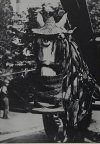
Victorian and Edwardian horses from historic photographs. Publication date 1980

paul stacey
master brummie
I think I have referred to this before , but our Cadence Milk horse had a straw hat for summer, and a sort of balaclava with ear holes in winter, mid fifty's Bartley Green>
I am not sure how authentic this image is, I found it on one of the social media platforms with the following caption.
“1912 A Cradley Heath chain making foundry had England’s largest horse Brought over from the Netherlands He was called Samson”.
I have run the image through a reverse search engine but cannot find another source to validate it.

“1912 A Cradley Heath chain making foundry had England’s largest horse Brought over from the Netherlands He was called Samson”.
I have run the image through a reverse search engine but cannot find another source to validate it.




